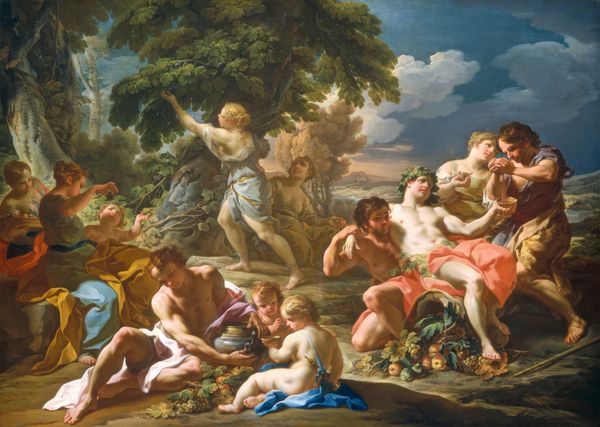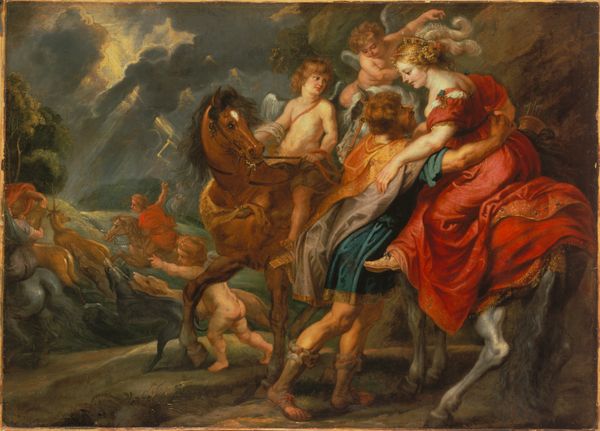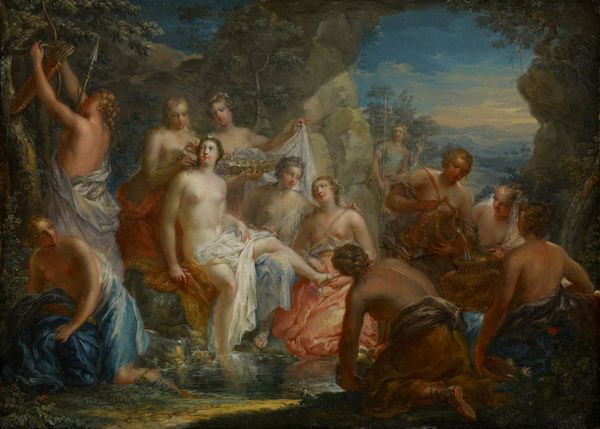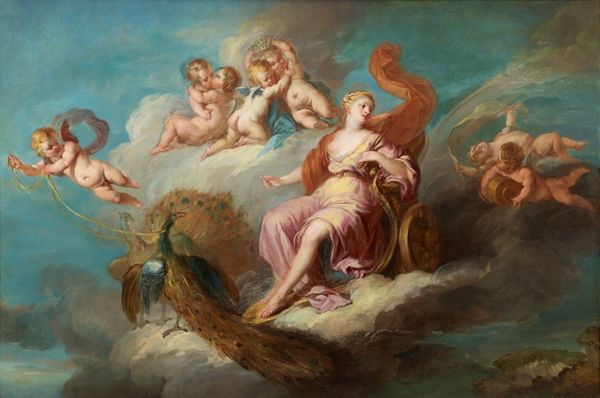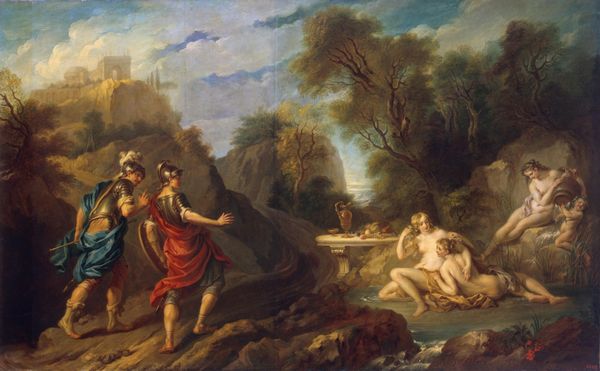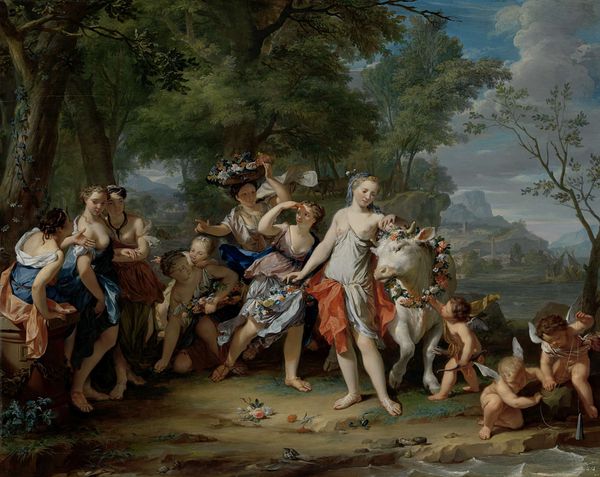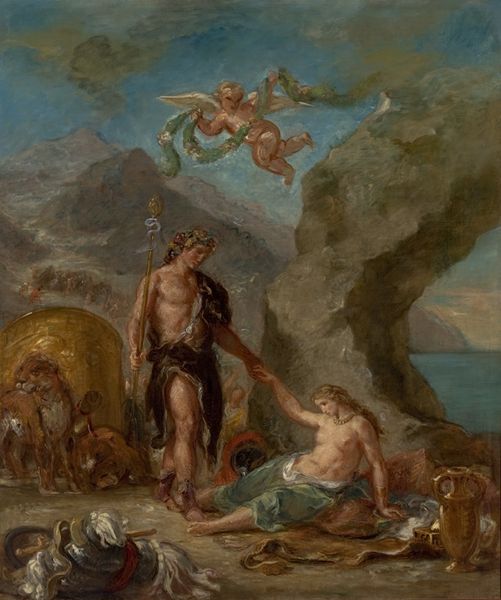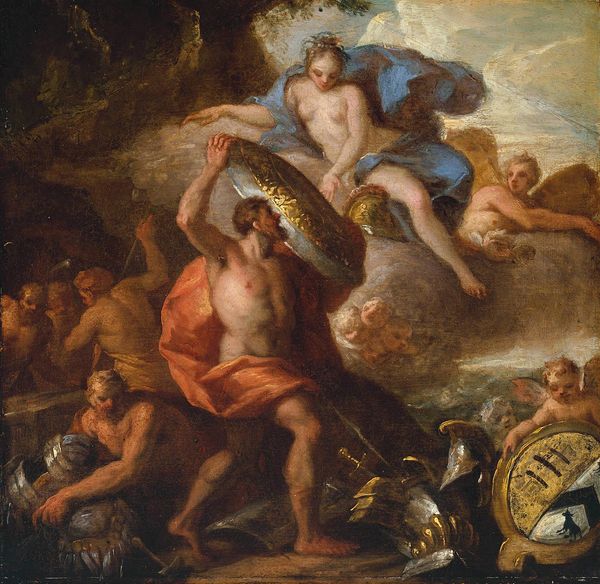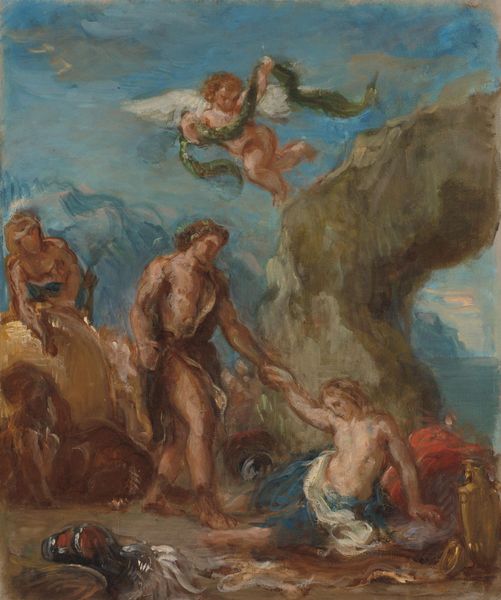
painting, oil-paint
#
allegory
#
baroque
#
painting
#
oil-paint
#
figuration
#
oil painting
#
genre-painting
#
history-painting
#
nude
Dimensions: overall: 73.66 × 103.51 cm (29 × 40 3/4 in.) framed: 96.52 × 126.37 × 13.34 cm (38 × 49 3/4 × 5 1/4 in.)
Copyright: National Gallery of Art: CC0 1.0
Curator: Painted around 1640 by Jan van den Hoecke, this oil painting is titled "The Judgment of Midas." Editor: Right off the bat, I'm struck by the dramatic contrast! The way the light catches Apollo and the rosy-skinned nymphs versus the shaded figures of Midas and his…entourage. It's almost theatrical, isn’t it? Curator: It's incredibly baroque. Van den Hoecke really plays with that tension, drawing on both sensual beauty and a darker, cruder energy. This moment captures a mythological clash: Apollo, god of music, against Pan, as judged by Midas. Editor: The story of that artistic rivalry plays into this light versus shadow motif, where taste itself is put on trial! Is beauty objective, or is it corrupted by earthly desires—which Midas certainly represents? It's fascinating to see it staged here so vividly. He really looks shady in his role as judge, doesn’t he? Curator: Well, consider the implications for an audience familiar with the tale! Midas chose Pan and his piping, siding with instinct, so to speak, over Apollonian harmony and reason, which is not rendered flatteringly! Apollo’s body radiates golden light and is meant to resemble divine energy made visible! Editor: Precisely. It’s also fascinating to view it through a class lens. Apollo and the nymphs evoke aristocratic ideals, while Midas and his companions appear…of the earth, aligned with a lower social order. Curator: It's interesting that you draw a direct line to social class. It feels to me more as though this touches on hubris, a kind of willful aesthetic ignorance—the man prefers what he is used to and is familiar with. This is the curse of Midas! Editor: Perhaps it's both. By conflating them, the artist paints the anxieties and fault lines in society regarding class and privilege at that moment in history. I wonder if there’s also an implicit commentary on art patronage at work? Curator: Ooh, now that's a rich interpretation. The idea that Midas embodies the less refined tastes of certain patrons, forever choosing the equivalent of "bad art" – that adds another layer to this already complex composition. Well, however you slice it, van den Hoecke's take on the story clearly speaks to more than just musical preferences. Editor: Indeed. It prompts us to consider the stakes when we judge anything to be of "value," and it’s intriguing to observe where, allegorically, social judgment ultimately leads.
Comments
No comments
Be the first to comment and join the conversation on the ultimate creative platform.
